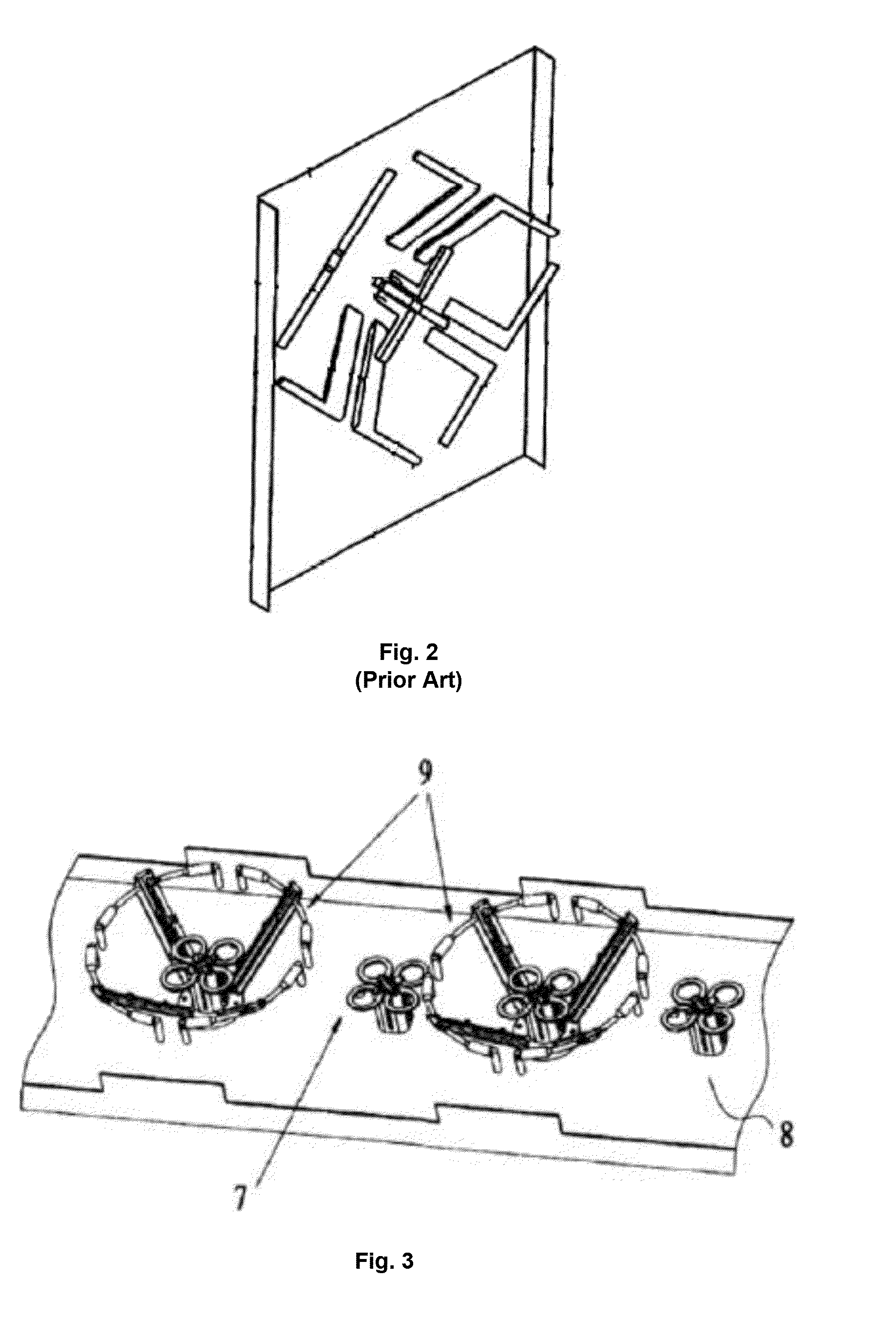Multi-frequency array antenna
a multi-frequency array and antenna technology, applied in the field of mobile communication, can solve the problems of not being able to fundamentally solve the arraying problem of existing dual-broad frequency antennas, not being able to achieve the optimal radiation performance of high/low frequency array antennas, and attracting attention from site selection and construction of new stations by operators, etc., to achieve the optimization of the electrical performance of signals in all band ranges, minimizing signal interference, and optimizing the effect of multi-frequency array antenna
- Summary
- Abstract
- Description
- Claims
- Application Information
AI Technical Summary
Benefits of technology
Problems solved by technology
Method used
Image
Examples
Embodiment Construction
[0033]Preferred Embodiments of the Invention
[0034]Embodiments of the Invention
[0035]Detailed Description of Specific Embodiments
[0036]Examples of the present invention will be described in detail below with reference to the accompanying drawings.
[0037]In a mobile communication antenna, radiation column elements (comprising low-frequency radiation column element and high-frequency radiation column element) are used for radiating communicating signals, which are typically formed by arranging a plurality of radiation units in a single-column matrix on a metal reflector. For high-frequency signals, the high-frequency radiation column element is formed by arranging a plurality of high-frequency radiation units at an equal distance in the axial direction of the same reference axis, and for the ease of subsequent description, the distance is defined as the second distance. Correspondingly, the low-frequency radiation column element is formed by arranging a plurality of low-frequency radiat...
PUM
 Login to View More
Login to View More Abstract
Description
Claims
Application Information
 Login to View More
Login to View More - R&D
- Intellectual Property
- Life Sciences
- Materials
- Tech Scout
- Unparalleled Data Quality
- Higher Quality Content
- 60% Fewer Hallucinations
Browse by: Latest US Patents, China's latest patents, Technical Efficacy Thesaurus, Application Domain, Technology Topic, Popular Technical Reports.
© 2025 PatSnap. All rights reserved.Legal|Privacy policy|Modern Slavery Act Transparency Statement|Sitemap|About US| Contact US: help@patsnap.com



